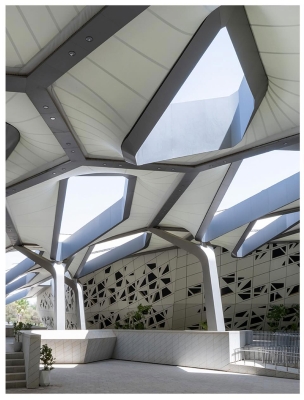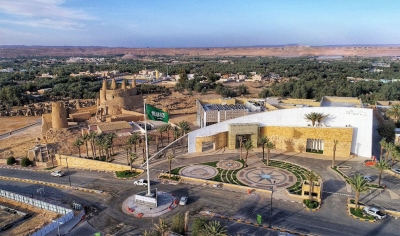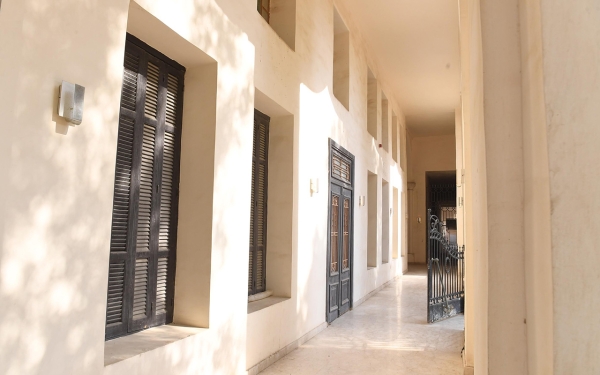
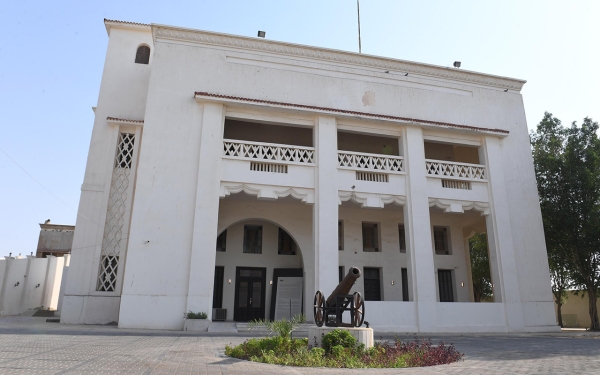
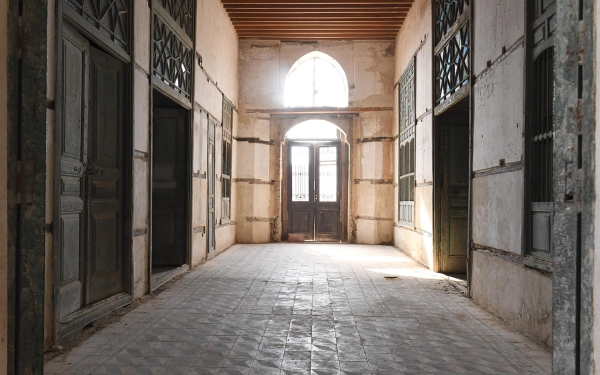
Khuzam Palace, currently known as Jeddah Regional Museum, was built by order of the Founding King Abdulaziz Bin Abdulrahman Al Saud in 1928 and was completed in 1932 in the heart of Jeddah Governorate. In 1981, it was converted into a museum by King Fahd Bin Abdulaziz Al Saud, with the front part of the palace being restored. The museum was inaugurated in March 1995, preserving the authentic architectural style of the building. Part of the palace was converted into a museum, furnished, and equipped with exhibits representing all historical eras, displayed and ordered scientifically from prehistoric times through the Islamic eras to the modern age.
The museum contains seven museum exhibit halls, which are:
Main Hall at the Entrance: This hall features a Quran verse highlighting the relation between religion and archaeological studies, pictures of the Two Holy Mosques, a painting about the museum network in the Kingdom of Saudi Arabia, and a traditional boat illustrating the importance of marine wealth in the life of Jeddah's residents.
Prehistoric Era Hall: This hall includes tools representing the early human life at these eras, of gathering, hunting, and traveling, with items made from available materials like stones, scrapers, cleavers, and arrowheads. It also displays pottery over five thousand years old, archaeological discoveries from Tayma' site dating back to 550 BCE, Mada'in Salih from 100-300 BCE, Dawmat al-Jandal from 1250 BCE, Najran from 850-250 BCE, and Dedan from 400 BCE.
Islamic Hall: This hall covers the migration of Prophet Muhammed, peace be upon him (PBUH), to al-Madinah al-Munawwarah, the era of the Rightly Guided Caliphs, and subsequent Islamic periods. Exhibits range from the beginning of Islam to the late Islamic eras, with drawings showing the spread of Islam from the main center, and photos of the Grand Mosque and the Prophet's Mosque. The hall also includes models of old Islamic coins, gravestones, pilgrimage routes, Quran copies, gravestones from al-Mu'alla cemetery in Makkah al-Mukarramah, Islamic manuscripts, pottery, and stoneware.
Jeddah Hall: This hall displays old Jeddah City, its historical development, old maps of the city, a model of Nassif House in the center, photos of the old city wall and gates, a collection of al-Rawashin (decorative wooden windows), pictures of famous old houses in Jeddah, and an image of the Shaf'i Mosque minaret, the oldest minaret in Jeddah.
Folk Heritage Hall: This hall showcases a collection of folk heritage items reflecting the social life of the time, including traditional clothing from the Hejaz and Bedouin regions, daily living necessities, coffee preparation and serving tools, traditional jewelry, several old weapons, incense burners, writing tools such as inkwells and wooden boards, some local leather products, and palm-frond handcrafts.
King Abdulaziz Hall: Located on the second floor, this hall features King Abdulaziz's majlis (meeting room) with its red and gold decoration, his chair at the center-front, wooden cane, old black telephone, and rare historical photos with heads of states and official delegations to the Kingdom, including his photo with King Farouk of Egypt, captured in 1945, and others with United States President Franklin Roosevelt, and Sheikh Mubarak Al Sabah of Kuwait, and more. It also contains handwritten letters and documents, personally signed by him.
King Saud Bin Abdulaziz Hall: This hall displays King Saud Bin Abdulaziz's luxurious wooden library, cane, telephone, swords, his porcelain tea set in white and dark blue, a gold-plated dish, coins and banknote currency minted during his reign, some of his medals and badges, stamps, his personal belongings like three mirrors, documents, letters between King Abdulaziz and King Saud, when crown prince, old publications from his era, and about seventy photos in the corridor depicting King Saud with heads of states and official delegations of several countries.
Related quizzes
Related articles

